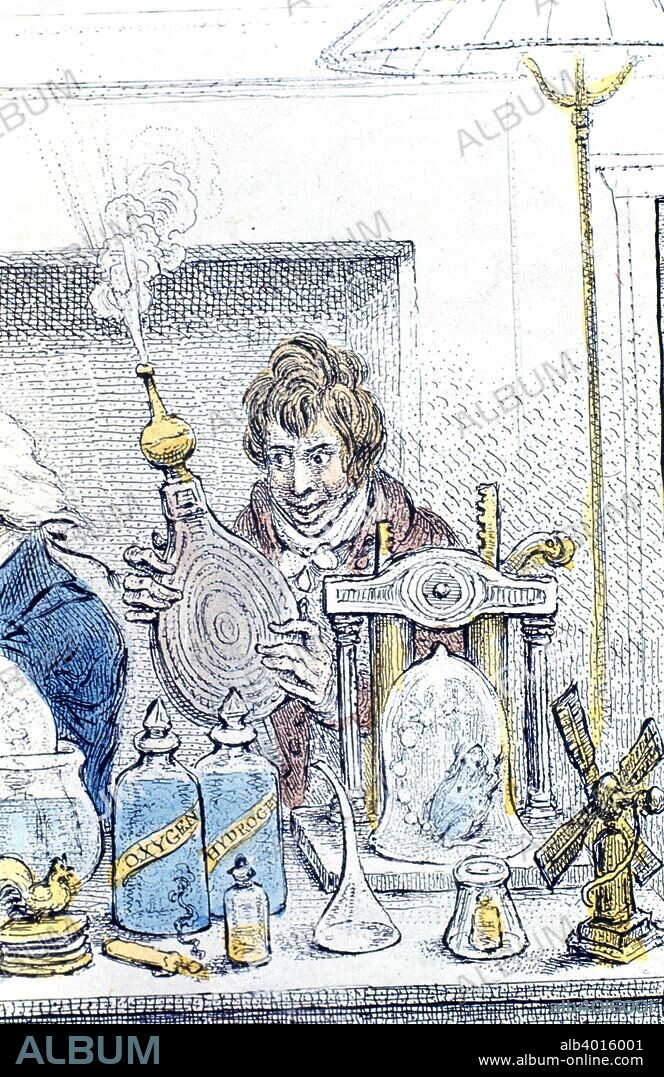alb4016001
Humphry Davy, British chemist and inventor, 1802. Artist: James Gillray

|
Zu einem anderen Lightbox hinzufügen |
|
Zu einem anderen Lightbox hinzufügen |



Haben Sie bereits ein Konto? Anmelden
Sie haben kein Konto? Registrieren
Dieses Bild kaufen.
Nutzung auswählen:

Titel:
Humphry Davy, British chemist and inventor, 1802. Artist: James Gillray
Untertitel:
Siehe automatische Übersetzung
Humphry Davy, British chemist and inventor, 1802. Davy (1778-1829) discovered the anaesthetic effects of laughing gas (nitrous oxide). In 1801 he was appointed lecturer at the Royal Institution, where he investigated, with his assistant Michael Faraday (1791-1867), his theory of volcanic action. Using electrolysis, Davy isolated the metals barium, calcium, magnesium, potassium, sodium and strontium, as well as proving that chlorine was a chemical element. He is probably best known for his invention in 1815 of the miners' safety lamp, which enabled deeper, more gaseous seams to be mined without risk of explosion. Detail from a Gillray cartoon, New Discoveries in Pneumatics, showing Davy demonstrating the effects of laughing gas to a meeting of the Royal Institution, London.
Persönlichkeiten:
Bildnachweis:
Album / Oxford Science Archive / Heritage Images
Freigaben (Releases):
Model: Nein - Eigentum: Nein
Rechtefragen?
Rechtefragen?
Bildgröße:
3366 x 5191 px | 50.0 MB
Druckgröße:
28.5 x 44.0 cm | 11.2 x 17.3 in (300 dpi)
Schlüsselwörter:
ANAESTHESIE • ANÄSTHESIE • BERUF • BESATZUNG • BETAEUBUNG • BETÄUBUNG • CHEMIE • CHEMIKER • DRUCK • ELEKTROLYSE • ENGLAND • ERFINDER • FARBE • FARBIG • GILLRAY • INDUSTRIE • JAMES GILLRAY • MANN • MÄNNCHEN • NARKOSE • NATURWISSENSCHAFTLER • PNEUMATIK • WISSENSCH.: CHEMIE • WISSENSCHAFTLER • WISSENSCHAFTLICH
 Pinterest
Pinterest Twitter
Twitter Facebook
Facebook Link kopieren
Link kopieren Email
Email
